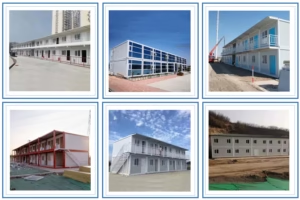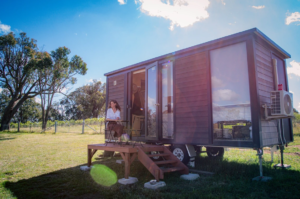Container houses are becoming popular due to their modern aesthetics, affordability, and sustainability. However, one major challenge regarding these homes is proper insulation. Without it, container homes are subject to extreme temperatures, condensation, and excessive noise. Let’s explore how to insulate a container house and discuss the best methods to accomplish this task.
Why Insulate a Container House?
1. Temperature Control: Container houses are made out of steel – a highly conductive material. Thus, it would be really hard to control the temperature of such homes. Temperatures on the outside can penetrate the walls and make the home unbearably hot in summer and freezing cold in winter. Insulation will help mitigate that effect by providing stable indoor temperatures.
2. Moisture Prevention: Temperature fluctuations can lead to condensation forming on the steel walls, which can cause rust, mold, and damage to interior finishes. Proper insulation reduces moisture buildup, protecting both the structure and its contents.
3. Noise Reduction: Insulation also serves the purpose of sound dampening so that rain, wind, and neighbors do not mess with the peace inside the home. True to its name, insulation also serves as proper thermal control.
Choosing the Right Insulation Material
Container homes can use various insulation materials, which have their advantages and disadvantages:
1. Spray Foam Insulation:
- Pros: Seals gaps extremely well and has an increased R-value (thermal resistance). Unlike most insulations, it helps to strengthen the structure and is resistant to moisture.
- Cons: Can be pricey and needs special tools for application.
- Best for: Extremely cold places and places with high humidity.
2. Rigid Foam Panels:
- Pros: They are economical, moisture resistant, and easy to install. These panels can also be glued directly onto the container walls.
- Cons: They are less effective in harsh weather conditions, as their R-value is lower than the spray foam.
- Best for: Projects that have a strict budget or storage containers.
3. Batt Insulation:
- Pros: They are inexpensive and easy to install, and they are often made of fiberglass or mineral wool, which is fireproof.
- Cons: It requires installing an interior frame, which takes away from your living space.
- Best for: Moderate climates and insulated interior walls.
Ways to Heat Insulate Your Container House
- Plan Your Layout: Determine the position of electrical wiring and plumbing parts before the insulation work starts.
- Prepare the Surface: Scrub the interior walls and remove dust, then paint over with a rust proof primer to avoid corrosion.
- Install the Insulation:
- For spray foam, apply directly onto the walls, covering every gap and crevice.
- For rigid foam panels, adhere them to the walls with construction adhesive.
- For batt insulation, build a wooden frame along the walls and place the insulation between the studs.
- Add a Vapor Barrier: In humid climates, install a vapor barrier over the insulation to prevent moisture infiltration.
- Finish the Interior: Cover the insulated walls with drywall, plywood, or any finishing material of your choice.
Cost Considerations
The cost of insulating a container house varies depending on the materials used and the size of the container. On average:
While some foam spray types may range between $1.50 to $3.00 per square foot, the cost of insulation for a container house varies depending on the type of material and container used. Moreover, rigid foam panels can be purchased at a $0.50 to $1.50 range, while batt insulation not including the frame ranges from $0.50 to $1.00 per square foot.
Final Thoughts
Deciding on the best insulating choice for the container house is up to the owner’s location, budget, and personal preferences. Regardless if you prefer batt or rigid panels or spray foam, proper investment guarantees that transforming the average steel box to a fully operational home is effortless. Either to withstand ever-changing climates or provide cozy accommodation.
Whatever container home project you’re planning, staying comfortable regardless of the location of a container house starts with choosing the right insulation.



